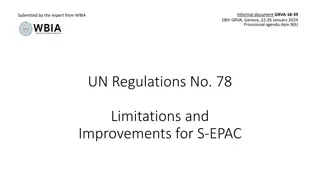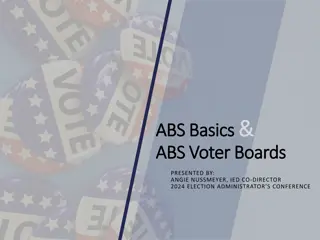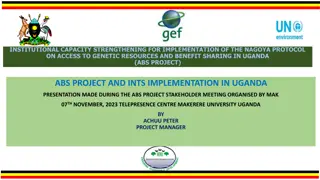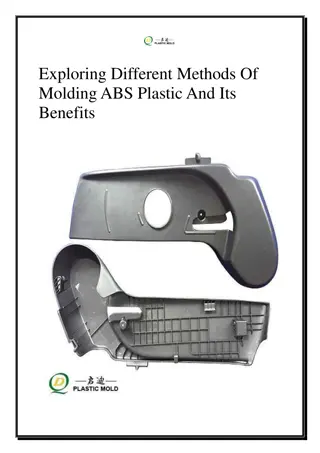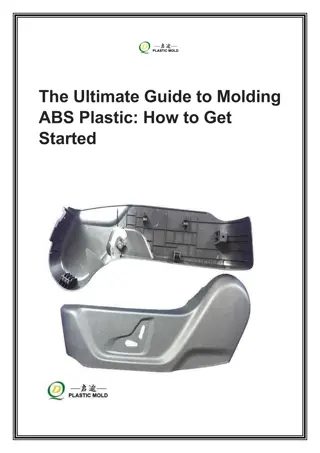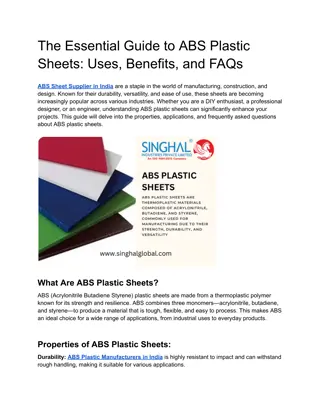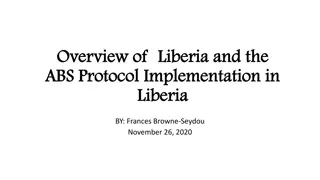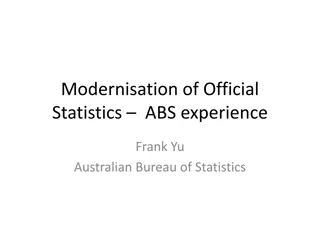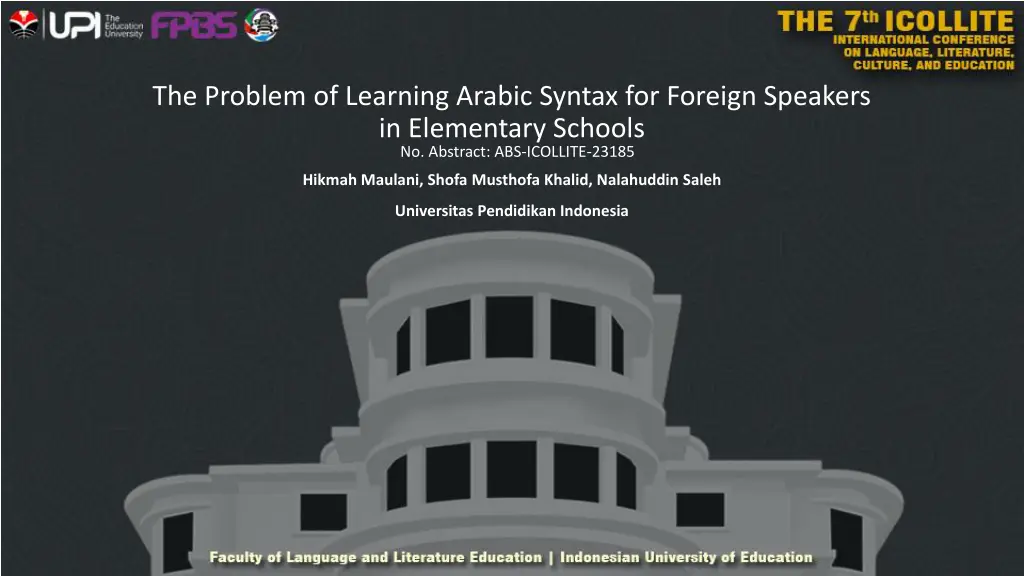
Understanding the Challenges of Learning Arabic Syntax in Elementary Schools
This research delves into the challenges faced by foreign speakers learning Arabic syntax in elementary schools, with a focus on Indonesia. The study evaluates the quality of Arabic language learning, its impact on students' religious understanding, appreciation of Arab culture, and daily language use. The research aims to identify issues, challenges, and factors influencing Arabic language teaching in primary schools.
Download Presentation

Please find below an Image/Link to download the presentation.
The content on the website is provided AS IS for your information and personal use only. It may not be sold, licensed, or shared on other websites without obtaining consent from the author. If you encounter any issues during the download, it is possible that the publisher has removed the file from their server.
You are allowed to download the files provided on this website for personal or commercial use, subject to the condition that they are used lawfully. All files are the property of their respective owners.
The content on the website is provided AS IS for your information and personal use only. It may not be sold, licensed, or shared on other websites without obtaining consent from the author.
E N D
Presentation Transcript
The Problem of Learning Arabic Syntax for Foreign Speakers in Elementary Schools No. Abstract: ABS-ICOLLITE-23185 Hikmah Maulani, Shofa Musthofa Khalid, Nalahuddin Saleh Universitas Pendidikan Indonesia
INTRODUCTION Currently, Indonesia's Ministry of Education, Culture, Research, and Technology is conducting a program called Merdeka Curiculum. The Merdeka Curriculum is a curriculum with diverse intracurricular learning where the content will be optimized to allow students enough time to delve into concepts and strengthen competencies. Teachers have the flexibility to choose various teaching tools so that learning can be tailored to the needs and interests of the students. Arabic language holds significant importance for the Muslim community in Indonesia as it is used in religious practices, such as prayer and reading the Quran. Therefore, the learning of the Arabic language in primary schools is expected to facilitate the understanding and use of Arabic in the religious context for students. Evaluation of the quality of Arabic language learning in primary schools is necessary to assess the extent to which students can comprehend and master Arabic in accordance with their cognitive development level. This research can identify issues and challenges in the learning process, including factors influencing the quality of Arabic language teaching by teachers. The research can evaluate the impact of Arabic language learning in primary schools on improving religious understanding, appreciation of Arab culture, and the use of Arabic language in students' daily lives.
LITERATURE REVIEW Language learning at the initial level is an activity to equip students from the beginning on an ongoing basis so that students have discipline in thinking and speaking. In essence, learning discipline in thinking is very closely related to the development of logical aspects and language discipline refers to the development of linguistic aspects (Zulkarnaini, 2011). And language skills consist of four components, namely skills listening skills, speaking skills, reading skills and skills write. A person's language reflects his thoughts, on writing skills. Having a goal can express one's thoughts more clearly by means of indirect communication (Anggraeni & Investigation, 2014). Based on this statement, strengthening for learning at the beginner level needs more attention, especially in the selection of strategies or learning methods The success of learning is largely determined by the models and learning methods designed by the teacher. Basically, teachers can use any learning model in carrying out teaching and learning activities. But the most important thing is that teachers must have careful consideration when using certain learning models. Of course, using these learning models there are expected achievements (Sulaiman, 2014). Regarding the problem of learning Arabic for beginners by containing nahwu learning, this is as explained by (Abdullah, 2012) regarding the selection of materials when Arabic teaching materials for non-Arabs touch the theme of nahwu. There are things to note: 1. Don't overdo it or focus on learning nahwu 2. Learning nahwu should not be made into a discipline with special books and hours, except for higher levels. 3. Do not rely on teaching methods that give more attention and portion to grammar. 4. Learning grammar that is functional or urgent for learners in expressions and conversations. 5. The teaching of nahwu must not sacrifice other purposes of the language itself. 6. The examples given should not be separated from context or meaning, but will be more appropriate through the context of sentences in texts or writings given according to the ability of the learner, or learning in meaning that can enrich vocabulary, expressions, and can help improve language skills and proficiency. 7. Avoiding the use of nahwu terms in teaching unless it is absolutely necessary. 8. It is recommended not to give nahwu lessons unless the learner is proficient in distinguishing between sounds and pronouncing vocabulary. 9. Increase exercise
METHOD This study uses a qualitative approach using a structured interview method. Interviews were conducted to explore and obtain information with honest assessments from participants. In qualitative research, the instrument or research tool is the researcher himself. Therefore, the researcher as an instrument must also be "validated" how far qualitative researchers are ready to carry out research which then goes into the field. Validation of researchers as instruments includes validation of understanding qualitative research methods, mastery of insight into the field under study, readiness of researchers to enter research objects, both academically and logistically
FINDING AND DISCUSSION Indicator Finding Explanation Selection of Relevant Material material level too high for Syntax. such as: Mubtada, Khabar, mubtada muakhar, khabar muqaddam Selecting material that is essential and relevant can help reduce student learning load and focus on important language skills. however, the selection of mubtada and khabar material in elementary schools is too high, it should start with an introduction to types of words. Use of Technology Utilizing technology such as Arabic learning applications Utilizing technology such as Arabic learning applications, online resources, and interactive media can help optimize language learning and reduce physical limitations in providing materials. Creativity in Teaching Teachers use creative and innovative approaches to teaching Arabic, such as games, stories or art-based activities This approach can help maintain students' interest and motivation in learning Arabic. Formative Assessment teachers have difficulty providing feedback because of difficulties achieving learning outcomes teachers should be able to provide appropriate feedback to assist students in the learning process and focus efforts on areas that require more attention.
FINDING AND DISCUSSION Implementation of the curriculum in Arabic language learning in elementary schools is the process of implementing a teaching plan that has been set by the government or educational institutions. The main objective of implementing the curriculum is to achieve the learning objectives that have been set and improve the quality of language education for students.Some things that can be done to reduce the burden of language learning in elementary schools that are effective and appropriate are: Teachers can utilize learning methods that integrate language skills, such as listening, speaking, reading, and writing skills. In this way, students can learn Arabic as a whole without having to allocate too much time for each skill. selection of good material is done through the introduction of hijaiyah letters and word forms, not extending towards deep syntax such as i'rab. this makes it difficult for students because they are not proficient in vocabulary mastery and letter recognition but are already burdened with understanding the text
CONCLUSION By conducting research on learning Arabic in Indonesian elementary schools, a clearer picture is revealed of the challenges, potential, and steps that need to be taken to improve the quality of learning Arabic for young people in Indonesia. It is important to remember that each curriculum implementation must be adapted to the needs and characteristics of students at the elementary school level. An independent curriculum in learning Arabic in primary schools should be a step forward towards learning that is more meaningful, student-centered, and relevant to their daily lives.
REFERENCES Abdullah, A. A.-G. A. H. (2012). Menyusun Buku Ajar Bahasa Arab (S. Y. Husein (ed.)). Akademika Permata. Anggraeni, R. K., & Investigation, G. (2014). Jurnal Waspada UNDARIS. 84 96. Zulkarnaini. (2011). Model Kooperatif Tipe Think Talk Write (TTW) Untuk Meningkatkan Kemampuan Menulis Karangan Deskripsi dan Berpikir Kritis. Jurnal.Upi.Edu, 2, 144 153 Sulaiman. (2014). MODEL PEMBELAJARAN COOPERATIVE LEARNING (Suatu Analisis Psikologis Dalam Pembelajaran). Visipena Journal, 5(2), 25 35. https://doi.org/10.46244/visipena.v5i2.258
THANK YOU! Follow us @adfala / email : hikmahmaulani@upi.edu



